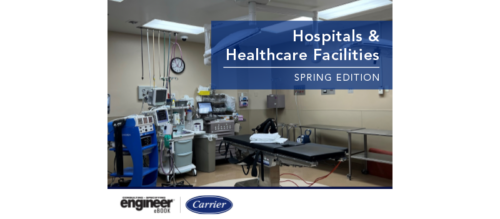Letters – 2008-01-01
In case of emergency, break glass Regarding your December Viewpoint, “Stocking stuffers for engineers,” check out (above picture) what my wife made a few Christmas holidays ago. Yes, I was one of the last to graduate with the “Slip Stick” slide rules. I, for one, could not afford those HP pocket calculators when they first came out.
In case of emergency, break glass
Regarding your December Viewpoint, “Stocking stuffers for engineers,” check out (above picture) what my wife made a few Christmas holidays ago. Yes, I was one of the last to graduate with the “Slip Stick” slide rules. I, for one, could not afford those HP pocket calculators when they first came out. The cost was $400, if I remember right, and they could only add, subtract, multiply, and divide.
Ray Larsen , PE VIA E-MAIL
Building data survey
Please be advised that data collection for the U.S. Dept. of Energy’s (DOE) 2007 Commercial Buildings Energy Consumption Survey (CBECS) begins mid-February, 2008. CBECS is the only national survey that collects information directly from the building managers or owners about the prevalence of energy-related characteristics in their buildings and the amounts—and related costs—of electricity, natural gas, fuel oil, and district heat used to operate the buildings.
Energy decision makers of approximately 5,600 sampled commercial buildings nationwide will be contacted by the National Opinion Research Center (NORC), a survey research firm under contract to the Energy Information Administration of the DOE to provide information about the energy-related characteristics of their buildings and about the types, amount, and cost of energy used.
This information will be used to better understand the relationship between the characteristics of buildings and their energy use. Building owners and managers use CBECS to obtain data on “typical buildings” for comparison with their buildings. Energy forecasters and modelers use CBECS to predict energy use patterns, conservation savings and market penetration of new technologies. CBECS is also used as the benchmark for the Energy Star Buildings program.
Readers of Consulting-Specifying Engineer are asked to respond to NORC should they be contacted. The buildings sampled for this quadrennial survey are part of a carefully drawn sample of commercial buildings, which includes office buildings, retail stores, restaurants, grocery stores, places of worship, healthcare buildings, hotels, gas stations, and shopping malls. Absolutely no information that would permit identification of respondents or their buildings is published.
Previous CBECS results are available online at www.eia.doe.gov/emeu/cbecs .
Feel free to contact me at Joelle.Michaels@eia.doe.gov or 202-586-8952 if you have any questions or need additional information.
Joelle Michaels U.S. Dept. of Energy Energy Information AdministrationWashington, D.C.
Radiant cooling and moisture
Regarding the article, “Selecting radiant ceiling cooling and heating systems, (Part 3)” published in the December 2007 issue of the Green Scene newsletter, can condensation on the beams or slabs be a problem? Would this require a separate de-humidifying system?
RW Speer Via Talkback on CSE Web site
Condensation would only become a problem if the chilled surfaces are held below the ambient indoor dewpoint for a period of time. In a humid climate, the required building ventilation system must provide some dehumidification anyway, for comfort, to keep the indoor ambient humidity below about 50% RH at 76 F (dewpoint about 62 F). Chilled surfaces kept above a dewpoint of 63 F still have substantial cooling capacity, about 25 btuh/sq. ft (70 to 80 watts/sq. m). I recommend that you check some of the links in the references appearing in the article. Stanley Mumma at Penn State has written a number of technical papers on the issue of condensation on radiant cooling surfaces. Visit www.doas.psu.edu/panels.html .
Geoff McDonell , PEng, LEED APOmicron Vancouver, British Columbia
Letters
Send your letters to Michael Ivanovich, editor-in-chief, Consulting-Specifying Engineer , 2000 Clearwater Drive, Oak Brook, IL 60523, or via e-mail to michael.ivanovich@reedbusiness.com .
Letters should be no longer than 200 words, and may be edited for space, style, spelling, and grammar.
Do you have experience and expertise with the topics mentioned in this content? You should consider contributing to our CFE Media editorial team and getting the recognition you and your company deserve. Click here to start this process.


